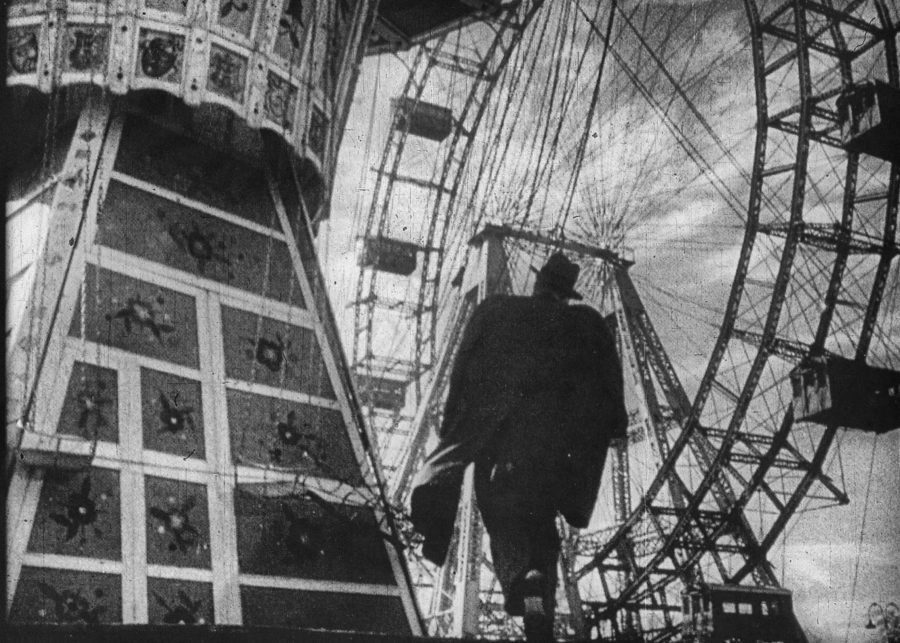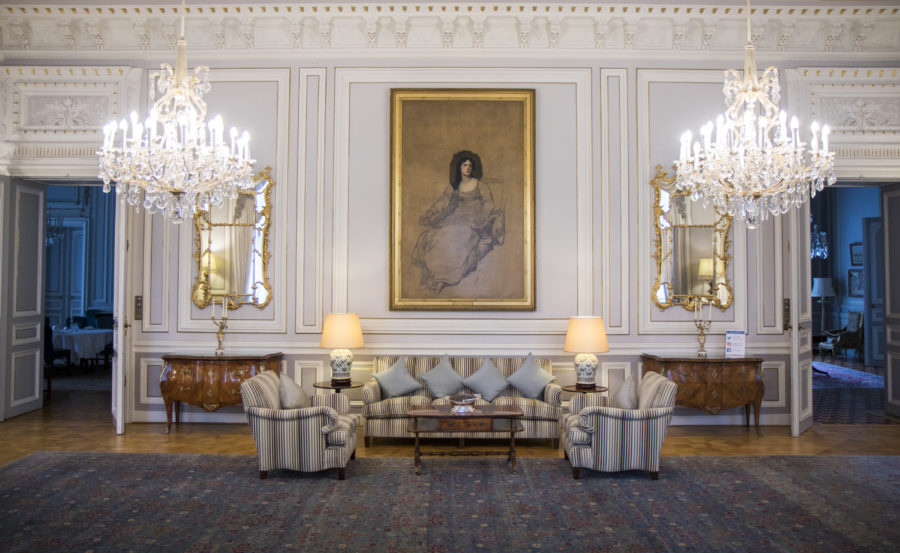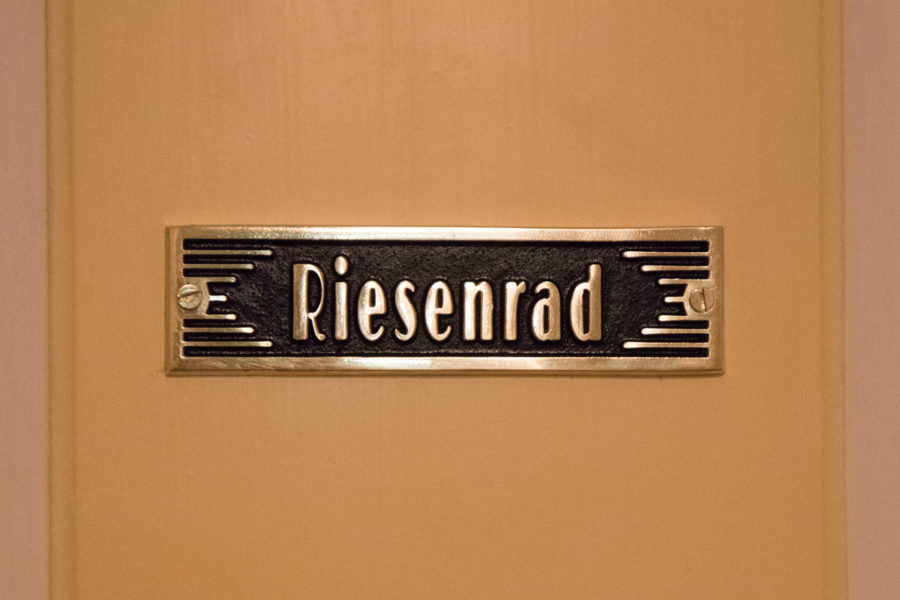28th January 2019 Vienna, Austria
Bringing The Third Man home

I am fortunate to live in Vienna in a historic residence. In addition to being used constantly for events by our three missions in the city, the house also has several bedrooms which are used for visiting ministers and officials.
When I arrived in Vienna, these bedrooms did not have names. So I ran a competition amongst staff for ideas on how we might name them.
The competition yielded a plethora of terrific suggestions.
Some ideas were historical or geographical. People suggested naming rooms after the Austrian Bundesländer (provinces) according to size (“Salzburg”, “Vorarlberg” etc), or former Austro-Hungarian territories (eg “Bohemia”, “Siebenbürgen” and so on).
People suggested famous figures: Britons, Austrians or combinations of these (“Famous Austro-Brits”). One problem was that these were mostly men eg Karl Popper, Josef Haydn, Metternich, and Wellington – although some suggested famous Austrian women including Hedy Lamarr, Maria Theresia and Ingeborg Bachmann. A cunning historical idea which combined the UK, Austria and the rest of Europe was participants in the 1815 Congress of Vienna – but again these were nearly all men.

The final category roamed more broadly. Ideas included Austrian food (Wiener Schnitzel, Palatschinken, Sachertorte, Germknödel etc – lovely, but would people want to stay in the Germknödel room?); the characters from The Sound of Music (Maria, Georg, Liesl, Friedrich & Co – good gender mix, fun and Austrian but not particularly British and not everyone’s taste); characters from Fawlty Towers (Basil, Sybil, Manuel, Polly et al – fine hotel connection and gender balance but not particularly Austrian); and an entry which is hard to categorise but which would have named the bedrooms Wie, Wer, Wo, Wann, Was and Warum (German for how, who, where, when, what and why). I found this elegant: totally impracticable but generating a force-field of imaginary conversations, particularly if in German: “Herr Smith ist in Warum”. ”Wo?” ”Nein, Warum”. “Was?” “Nein…” and so on (“Mr Smith is in Why.” “Where?” “No, Why.” “What?” “No…”).

All these suggestions helped me to focus on what I wanted for names for the residence bedrooms: flair; memorability; a background story; no gender balance issues; and ideally something which combined the UK and Austria. Inspired by them, I decided to name the bedrooms after locations in the film “The Third Man”. This 1948 British production, based on a novella by Graham Greene, is set in the ruins of post-war Vienna and features love, betrayal, death, doomed romance, eternal hope and stunning locations, mostly filmed at night with wet cobblestones using British cameras. The six bedrooms will be called (warning: the explanations contain spoilers if you have not seen the film):
- Former VIP I becomes Riesenrad (Big Wheel), built by British engineer Walter Bassett in 1897. In the film, the scene of the key confrontation high above the city between Holly Martins and Harry Lime.
- Former VIP II becomes Mozart. The Café Mozart is where Holly Martins meets the mysterious “Baron” Kurtz, the latter clutching a copy of Martins’ book “The Oklahoma Kid” as Holly pursues his friend Harry’s apparent death.
- 2nd floor ensuite double becomes Strauss. The Third Man opens with scenes from the city, including the Strauss statue in the Stadtpark, as a narrator, voiced by director Carol Reed, says: “I never know the old Vienna before the war, with its Strauss music, glamour and easy charm – Constantinople suited me better”.
- 2nd floor corner bedroom becomes Sacher. One of Vienna’s most historic hotels, the Sacher features in several scenes from the film including that where Major Calloway, played by Trevor Howard, tries to persuade Holly Martins to leave Vienna.
- 2nd floor double bed, overlooking church becomes Schulhof. Named after the breath-taking scene in the film where Harry Lime flees down the glistening cobbles of Schulhof, his shadow on the church wall, before disappearing into Am Hof and somehow vanishing. The street is unchanged today.
- 2nd floor small double bed becomes Schreyvogelgasse. Hard to pronounce but a rarely-used room and the scene cannot be omitted. The doorway of number 8 Schreyvogelgasse is where Harry Lime, played by Orson Welles, makes his first appearance halfway through the film. A cat belonging to Harry’s lover Anna, who is still in love with him despite his evil-doing and apparent demise, finds its way through the night-time streets to a dark figure in the shadow of a doorway and begins playing with his shoelaces. Believing someone is following him, the inebriated Holly Martins taunts the person to come out of hiding: “What kind of spy do you think you are?” When a Viennese woman irritated by the noise turns on her light, Harry’s face is suddenly illuminated. One of film’s most magical moments.
Each room has a text about the background to its name, along with a framed picture of the scene in question.
I was pleased when, in October, we were able to host a visit by the Graham Greene Birthplace Trust and explain the names, along with a zither-player performing incidental music from the film. The group, which included Graham Greene’s daughter, Caroline Bourget, were “begeistert” – delighted.
Thanks Louis and I do look forward to your next visit! Hope you enjoyed the Vis Moot in the residence – which also has quite a tradition.
Wonderful – I only wished I had known when I was in the building last Monday at the reception for the Vis Moot. Next year I shall enquire of Mr Fisher! I was curious to know if Trevor Howard had stayed at the Sacher during filming, and by googling “Trevor Howard Sacher” I found this blog.